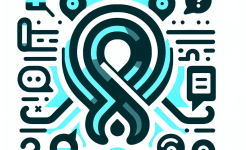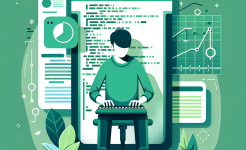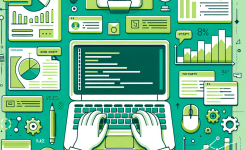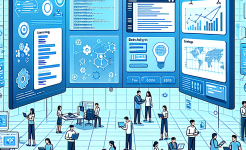The Importance of Customer Engagement in Agile
Customer engagement is the cornerstone of Agile development. Unlike traditional project management methodologies, Agile thrives on continuous feedback and collaboration. The customer is not just a stakeholder but an active participant in the development process. This involvement ensures that the product being developed meets the real needs of the end-users. Without this engagement, teams risk building solutions that are misaligned with customer expectations, leading to wasted resources and missed opportunities.
The first step in effective customer engagement is establishing a clear communication channel. This involves regular meetings, such as daily stand-ups, sprint reviews, and retrospectives, where the customer can provide input and feedback. These interactions help in refining the product backlog, prioritizing features, and making necessary adjustments. Moreover, it fosters a sense of ownership and partnership, making the customer feel invested in the project's success.
Another crucial aspect is setting realistic expectations. Agile projects are dynamic, and requirements can evolve over time. It is essential to manage customer expectations by clearly communicating the iterative nature of Agile. This includes explaining that while the final product may not be perfect from the start, it will continuously improve through each iteration. By aligning expectations, customers are more likely to remain engaged and supportive throughout the project lifecycle.
Building a Collaborative Environment
Creating a collaborative environment is vital for sustaining customer engagement in Agile development. This involves more than just regular meetings; it requires a cultural shift where both the development team and the customer work together as a cohesive unit. One effective strategy is to involve the customer in the sprint planning process. By doing so, they gain a deeper understanding of the work involved and can provide more informed feedback.
Another strategy is to use collaborative tools that facilitate real-time communication and transparency. Tools like Jira, Trello, or Slack can help in tracking progress, sharing updates, and gathering feedback efficiently. These tools not only streamline communication but also create a shared space where both parties can visualize the project's status. This transparency builds trust and ensures that everyone is on the same page, reducing the likelihood of misunderstandings or misaligned priorities.
Lastly, fostering a culture of openness and mutual respect is essential. Customers should feel comfortable sharing their thoughts and concerns without fear of judgment. Similarly, the development team should be open to feedback and willing to make adjustments as needed. This mutual respect creates a positive working relationship, encouraging continuous engagement and collaboration.
Ensuring Continuous Feedback Loops
Continuous feedback is a hallmark of Agile development and a critical component of customer engagement. Unlike traditional methods where feedback is often collected at the end of the project, Agile emphasizes frequent and iterative feedback. This approach allows for timely adjustments, ensuring that the product evolves in line with customer needs.
One effective way to ensure continuous feedback is through regular sprint reviews. At the end of each sprint, the development team demonstrates the completed work to the customer, who then provides feedback. This iterative process ensures that the product is continuously validated against customer expectations, reducing the risk of major rework later in the project. Additionally, it keeps the customer engaged and invested in the development process.
Another strategy is to implement automated feedback mechanisms, such as surveys or feedback forms, that can be used throughout the project. These tools can provide valuable insights into customer satisfaction and highlight areas for improvement. By analyzing this feedback, the team can make data-driven decisions that enhance the product's quality and relevance. Moreover, it demonstrates to the customer that their input is valued and acted upon, further strengthening their engagement.
Aligning Customer Expectations with Project Outcomes
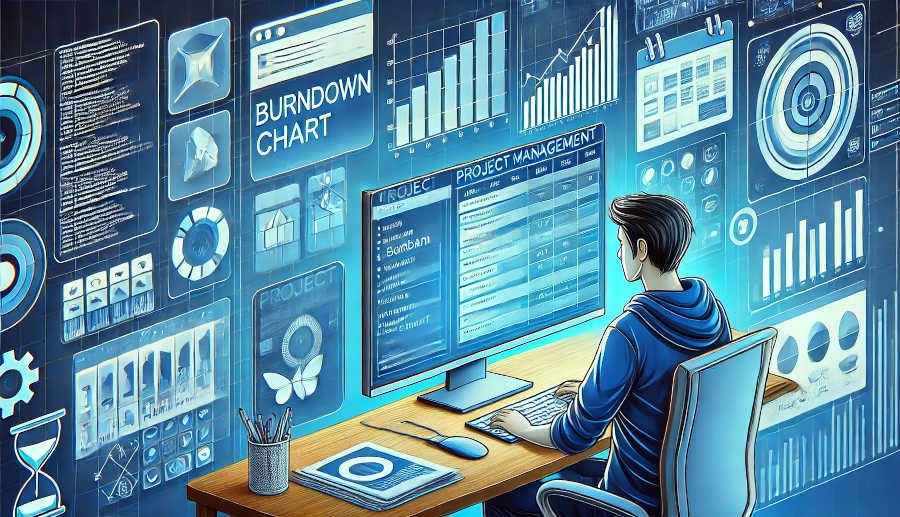
Aligning customer expectations with project outcomes is perhaps one of the most challenging aspects of Agile development. Given the iterative nature of Agile, it is crucial to manage expectations from the outset. This involves setting clear goals, defining success criteria, and maintaining open communication throughout the project.
One effective approach is to use a product roadmap that outlines the project's vision, key milestones, and anticipated deliverables. This roadmap serves as a visual guide, helping the customer understand the project's trajectory and what to expect at each stage. It also provides a framework for discussing any changes or adjustments, ensuring that both parties are aligned on the project's direction.
Another strategy is to establish a shared understanding of the project's scope and constraints. This includes discussing potential risks, challenges, and limitations upfront. By being transparent about what can and cannot be achieved, the team can manage customer expectations more effectively. This openness fosters trust and ensures that the customer remains engaged, even when faced with setbacks or changes.
Conclusion
In conclusion, customer engagement is a vital component of successful Agile development. By fostering collaboration, ensuring continuous feedback, and aligning expectations, teams can build products that truly meet customer needs. Effective communication, transparency, and a culture of mutual respect are key to sustaining engagement throughout the project lifecycle. As the Agile methodology continues to evolve, so too must the strategies for engaging customers, ensuring that their voices are heard and their needs are met.
Ultimately, the success of an Agile project hinges on the active participation of the customer. By implementing the strategies discussed in this article, teams can create a collaborative environment that not only delivers high-quality products but also strengthens the relationship with the customer. In doing so, they can achieve the ultimate goal of Agile development: delivering value through continuous improvement and customer satisfaction.
FAQ
1.How often should customer feedback be collected in Agile development?
Customer feedback should be collected continuously throughout the Agile development process. Regular sprint reviews, daily stand-ups, and feedback mechanisms like surveys are essential to ensure that the product evolves in line with customer expectations. This iterative feedback loop allows for timely adjustments and helps in maintaining customer engagement.
2.What tools can facilitate customer engagement in Agile projects?
Tools like Jira, Trello, and Slack are highly effective in facilitating customer engagement. These tools provide a shared space for communication, tracking progress, and gathering feedback. They enhance transparency and ensure that both the development team and the customer are aligned on the project's status and priorities.
3.How can customer expectations be managed in Agile development?
Customer expectations can be managed by setting clear goals, defining success criteria, and maintaining open communication. Using a product roadmap and discussing potential risks and constraints upfront are also effective strategies. By aligning expectations from the outset, teams can ensure that the customer remains engaged and supportive throughout the project.
ARTICLE TITLE :Customer engagement strategies in agile development ,AUTHOR :ITpmlib


